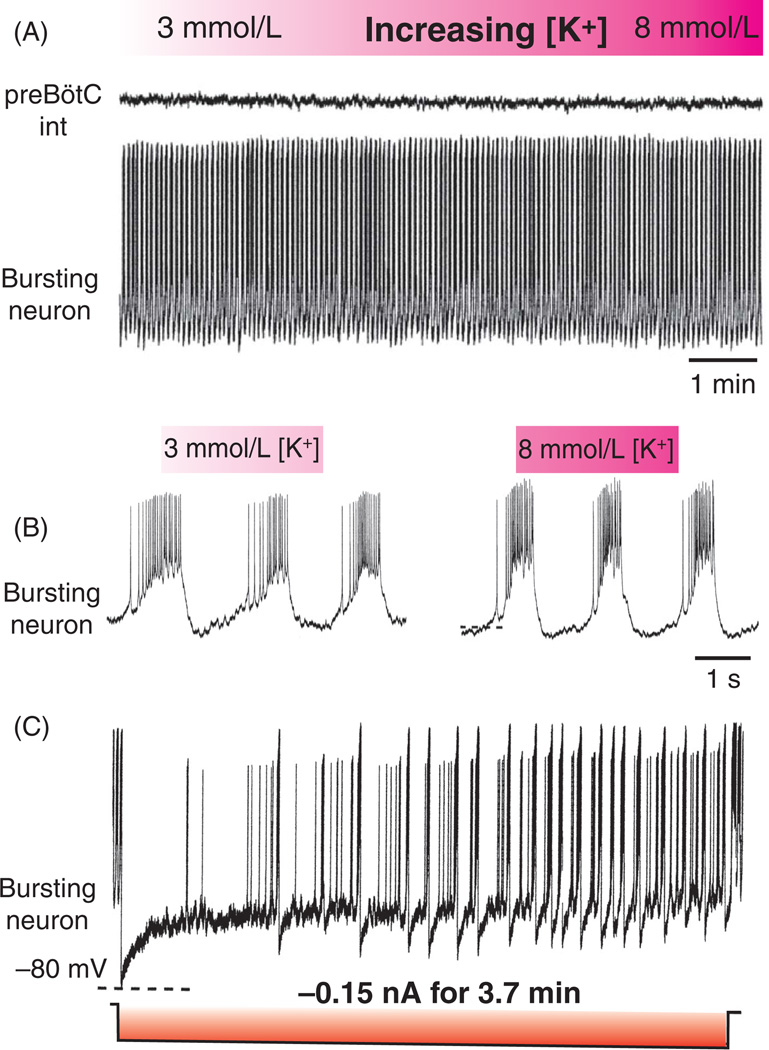Figure 7.
Pacemaker neurons are able to burst throughout a range of extracellular potassium concentrations with the contribution of the persistent sodium current. (A) An intracellular recording from an individual pacemaker neuron illustrating autonomous bursting throughout a range of extracellular potassium concentrations (3–8 mmol/L) without significant changes to membrane potential. (B) Traces expanded from A of the autonomously bursting pacemaker at 3 mmol/L (left) and 8 mmol/L (right) extracellular K+. (C) Autonomous bursting involves INaP as revealed by long-lasting hyperpolarizing current injections that cause the neuron to cease bursting, but as it intrinsically depolarizes bursting is resumed. Hence, pacemaker neurons do not require artificial elevation of extracellular potassium to autonomously burst (77, 564, 566).

